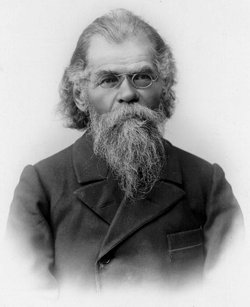
The Turkic languages are a language family of more than 35 documented languages, spoken by the Turkic peoples of Eurasia from Eastern Europe and Southern Europe to Central Asia, East Asia, North Asia (Siberia), and West Asia. The Turkic languages originated in a region of East Asia spanning from Mongolia to Northwest China, where Proto-Turkic is thought to have been spoken, from where they expanded to Central Asia and farther west during the first millennium. They are characterized as a dialect continuum.

Qinghai is an inland province in Northwestern China. It is the largest province of China by area and has the third smallest population. Its capital and largest city is Xining.

The Monguor, the Tu people, the White Mongol or the Tsagaan Mongol, are Mongolic people and one of the 56 officially recognized ethnic groups in China. The "Tu" ethnic category was created in the 1950s.

The Salar people are a Turkic ethnic minority in China who speak Salar, a Turkic language of the Oghuz sub-branch. They numbered 165,159 people in 2020, according to that year's national census.

Turkmens are a Turkic ethnic group native to Central Asia, living mainly in Turkmenistan, northern and northeastern regions of Iran and north-western Afghanistan. Sizeable groups of Turkmens are found also in Uzbekistan, Kazakhstan, and the North Caucasus. They speak the Turkmen language, which is classified as a part of the Eastern Oghuz branch of the Turkic languages.

The Naiman, meaning The Eight, were a medieval tribe originating in the territory of modern Western Mongolia, and are one of the 92 tribes of Uzbeks, modern Mongols and in the middle juz of the Kazakhs.
Old Siberian Turkic, generally known as East Old Turkic and often shortened to Old Turkic, was a Siberian Turkic language spoken around East Turkistan and Mongolia. It was first discovered in inscriptions originating from the Second Turkic Khaganate, and later the Uyghur Khaganate, making it the earliest attested Common Turkic language. In terms of the datability of extant written sources, the period of Old Turkic can be dated from slightly before 720 AD to the Mongol invasions of the 13th century. Old Turkic can generally be split into two dialects, the earlier Orkhon Turkic and the later Old Uyghur. There is a difference of opinion among linguists with regard to the Karakhanid language, some classify it as another dialect of East Old Turkic, while others prefer to include Karakhanid among Middle Turkic languages; nonetheless, Karakhanid is very close to Old Uyghur. East Old Turkic and West Old Turkic together comprise the Old Turkic proper, though West Old Turkic is generally unattested and is mostly reconstructed through words loaned through Hungarian. East Old Turkic is the oldest attested member of the Siberian Turkic branch of Turkic languages, and several of its now-archaic grammatical as well as lexical features are extant in the modern Yellow Uyghur, Lop Nur Uyghur and Khalaj ; Khalaj, for instance, has (surprisingly) retained a considerable number of archaic Old Turkic words despite forming a language island within Central Iran and being heavily influenced by Persian. Old Uyghur is not a direct ancestor of the modern Uyghur language, but rather the Western Yugur language; the contemporaneous ancestor of Modern Uyghur was the Chagatai literary language.

The East Turkestan Republic (ETR) was a short-lived satellite state of the Soviet Union in northern Xinjiang, which existed from 1944 to 1946. It is often described as the Second East Turkestan Republic to differentiate it from the First East Turkestan Republic (1933–1934), but "second" was never a part of its official name.

Vasily Vasilievich Radlov or Friedrich Wilhelm Radloff was a German-Russian linguist, ethnographer, and archaeologist, often considered to be the founder of Turkology, the scientific study of Turkic peoples. According to Turkologist Johan Vandewalle, Radlov knew all of the Turkic languages and dialects as well as German, French, Russian, Greek, Latin, Manchu, Mongolian, Chinese, Arabic, Persian, and Hebrew.

Xunhua Salar Autonomous County is an autonomous county in the southeast of Haidong Prefecture, in Qinghai province, China. The autonomous county has an area of around 2,100 square kilometres (810 sq mi), and a population of approximately 161,600 inhabitants per a 2022 government publication. In the east it borders the province of Gansu and in the south and the west Huangnan Tibetan Autonomous Prefecture. Its postal code is 811100 and its capital is the town of Jishi.

Western Yugur, also known as Neo-Uygur, is the Turkic language spoken by the Yugur people. It is contrasted with Eastern Yugur, a Mongolic language spoken within the same community. Traditionally, both languages are indicated by the term "Yellow Uygur", from the endonym of the Yugur.
Eastern Yugur is a Mongolic language spoken within the Yugur nationality. The other language spoken within the same community is Western Yughur, which is a Turkic language. The terms may also indicate the speakers of these languages, which are both unwritten. Traditionally, both languages are indicated by the term Yellow Uygur, from the autonym of the Yugur. Eastern Yugur speakers are said to have passive bilingualism with Inner Mongolian, the standard spoken in China.
The Turkic migrations were the spread of Turkic tribes and Turkic languages across Eurasia between the 4th and 11th centuries. In the 6th century, the Göktürks overthrew the Rouran Khaganate in what is now Mongolia and expanded in all directions, spreading Turkic culture throughout the Eurasian steppes. Although Göktürk empires came to an end in the 8th century, they were succeeded by numerous Turkic empires such as the Uyghur Khaganate, Kara-Khanid Khanate, Khazars, and the Cumans. Some Turks eventually settled down into sedentary societies such as the Qocho and Ganzhou Uyghurs. The Seljuq dynasty settled in Anatolia starting in the 11th century, resulting in permanent Turkic settlement and presence there. Modern nations with large Turkic populations include Kyrgyzstan, Turkmenistan, Turkey, Azerbaijan, Uzbekistan and Kazakhstan, and Turkic populations also exist within other nations, such as Chuvashia, Bashkortostan, Tatarstan and the Sakha Republic of Siberia in Russia, Northern Cyprus, the Crimean Tatars, the Kazakhs in Mongolia, the Uyghurs in China, and the Azeris in Iran.

Salur, Salyr or Salgur was an ancient Oghuz Turkic tribe and a sub-branch of the Üçok tribal federation.

Grigory Nikolayevich Potanin was a Russian botanist, ethnographer, and natural historian. He was an explorer of Inner Asia and was the first to catalogue many of the area's native plants. Potanin was also an author and a political activist who aligned himself with the Siberian independence movement.

The Ili Rebellion was a separatist uprising by the Turkic peoples of northern Xinjiang against the Kuomintang government of the Republic of China, from 1944 to 1946. The Ili Rebellion began with the East Turkestan National Revolution, known in Chinese historiography as the Three Districts Revolution, which saw the establishment of the Second East Turkestan Republic. The leadership was dominated by Uyghurs but the population consisted mostly of Kazakhs.

The Kuomintang Islamic insurgency was a continuation of the Chinese Civil War by Chinese Muslim Kuomintang Republic of China Army forces mainly in Northwest China, in the provinces of Gansu, Qinghai, Ningxia, and Xinjiang, and another insurgency in Yunnan.

Ma Biao (1885–1948) was a Chinese Muslim Ma Clique General in the National Revolutionary Army, and served under Ma Bufang, the Governor of Qinghai. He was a member of Ma Bufang's family, Ma Biao was the eldest son of Ma Haiqing 馬海清, who was the sixth younger brother of Ma Haiyan, the grandfather of Ma Bufang.
The Qinghai–Gansu sprachbund or Amdo sprachbund is a sprachbund in the plateau traversed by the upper Yellow River, including northeastern Qinghai and southern Gansu. This has long been an area of interaction between speakers of northwestern varieties of Mandarin Chinese, Amdo Tibetan and Mongolic and Turkic languages. These families feature contrasting typologies, which spread between languages in the region. The languages have come to share many features, and differ significantly from their relatives outside the region.
















